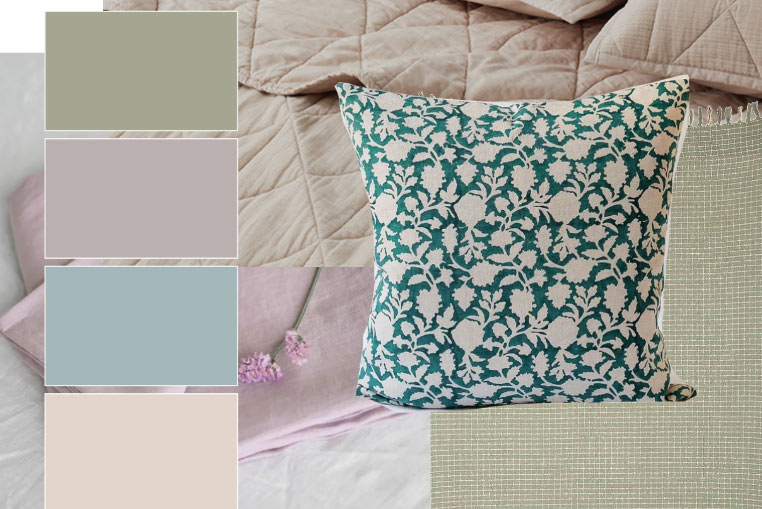Did you know that the average American will spend 36 years of their life in bed?
For something that we spend so much time close to that impacts our sleep quality and health, it’s important to choose bedding that’s as comfy as it is stylish. Not only is quality bedding good for your own health, it’s better for the planet, too.
This guide discusses everything you need to know about bedding — from what fabrics to look for, what products to choose, and how to pick pieces to match your style.
Whether you like simplicity, boho style, or cozy cottage feels, keep reading to find eco-friendly options that will make your bed a dreamy place to be.
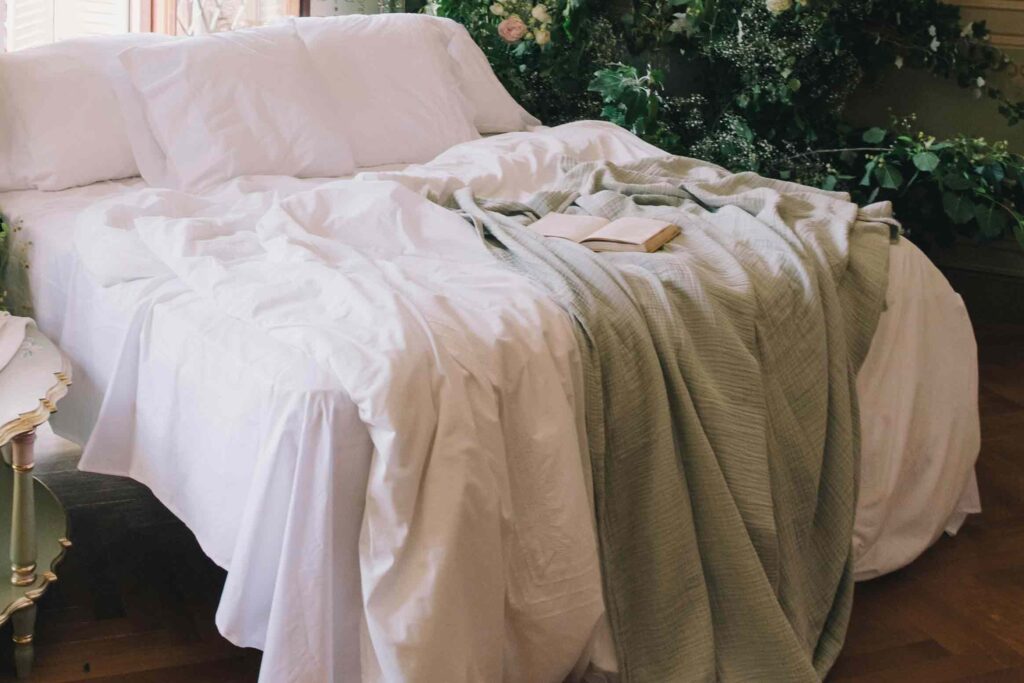
Choosing the Right Fabrics
With your skin so close to your bedding, it’s important to choose healthy fabric options. Not all fabrics are created equally – no matter what aesthetic you’re going for, here are some pointers to look out for to choose the best.
Choose Natural, Organic Fabrics
Natural fabrics are derived from plants and animals, offering a more breathable alternative to synthetic materials.
Unlike synthetic fabrics, which are essentially plastic, natural fabrics allow for better airflow and temperature regulation, preventing discomfort and excessive sweating during sleep.
Moreover, natural fabrics are less likely to harbor bacteria and shed harmful microplastics, making them a safer choice for both your health and the environment. Around 2 million tonnes of microplastics end up in the ocean each year; making a small change in our choices can help.
Some eco-friendly, natural fabric options to consider include:
- Organic Cotton: Grown without synthetic pesticides or fertilizers, organic cotton is gentle on the skin and environmentally friendly. It’s breathable, moisture-wicking, and ideal for those with sensitive skin or allergies.
- Linen: Made from the flax plant, linen is highly durable, breathable, and moisture-wicking. It’s known for its natural texture and cooling properties, making it perfect for warm climates or hot sleepers.
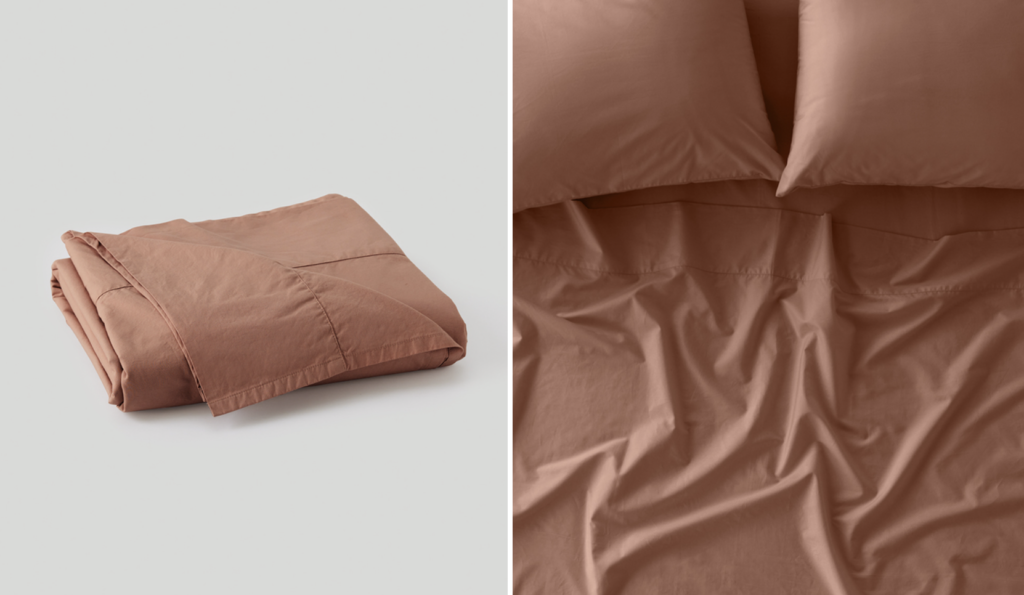
- Wool: Wool is a natural insulator, which will keep you warm in winter. It’s also moisture-wicking, hypoallergenic, and resistant to dust mites, making it an excellent choice for those with allergies or asthma. It’s also biodegradable and renewable, making it an eco-friendly option for bedding.
- Hemp: Hemp fabric is derived from the hemp plant and is known for its strength and durability. It requires minimal water and pesticides to grow, making it a sustainable choice. Hemp is also naturally antimicrobial and resistant to mold and mildew, making it suitable for bedding.
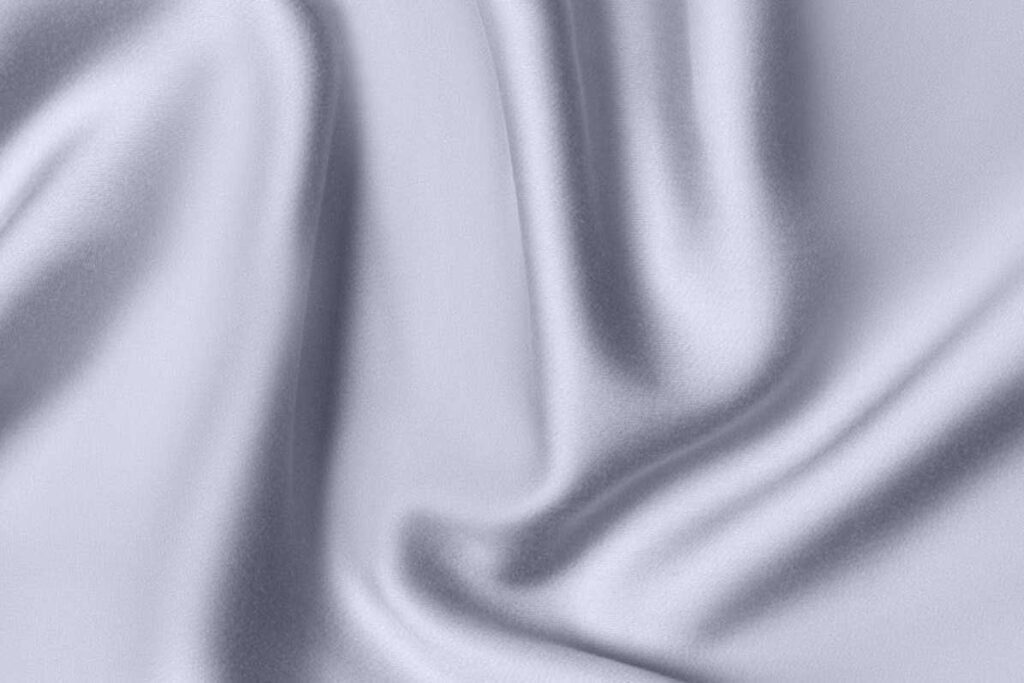
- Peace Silk: Luxurious and soft, silk is produced by silkworms fed exclusively on mulberry leaves. Peace silk, in theory, is more sustainable than regular silk. However, it’s a complicated subject and best to read more about the complexities before purchasing. Silk is biodegradable and offers excellent breathability and temperature regulation for comfortable sleep.
- Eucalyptus silk: Another alternative to silk is a semi-synthetic made from eucalyptus. This is an eco-friendly option that still gives you that soft feel of silky sheets.
Color Matters: Avoid Harmful Dyes
When looking for aesthetic bedding, it’s natural to be drawn to certain colors or patterns. Unfortunately, there’s more than what meets the eye – fabrics are often dyed with harmful chemicals, posing risks to both your health and the environment.
For example. fast fashion giant Shein, who also sells bedding, was found to regularly have hazardous chemicals in their products that break EU regulations. A Greenpeace study that tested their products found that 15% contained harmful chemicals.
Toxic and Harmful Dyes
Another benefit to choosing natural fabrics, as discussed above, is that they won’t be dyed with synthetic dyes, many of which are toxic. Some of the dyes commonly used to keep an eye out to avoid are:
- Azo dyes: Synthetic colorants linked to skin irritation and even carcinogenic effects, making them unsafe for bedding.
- Heavy metals: Lead, cadmium, and chromium, commonly found in synthetic dyes, can accumulate in the body and cause neurological damage and organ toxicity.
- Formaldehyde: This toxic chemical, used to prevent wrinkles in textiles, can lead to skin irritation, respiratory issues, and is classified as a known human carcinogen.
What Dyes to Choose Instead
When selecting bedding, opt for dyes that are derived from natural or low-impact sources. These dyes, such as plant-based or eco-friendly alternatives, offer a safer option for both your health and the environment.
Look for bedding labeled as using natural dyes or low-impact dyes, which are free from harmful chemicals and produce fewer pollutants during the dyeing process. Choosing bedding with safe dye options ensures a healthier and more sustainable choice for your home.
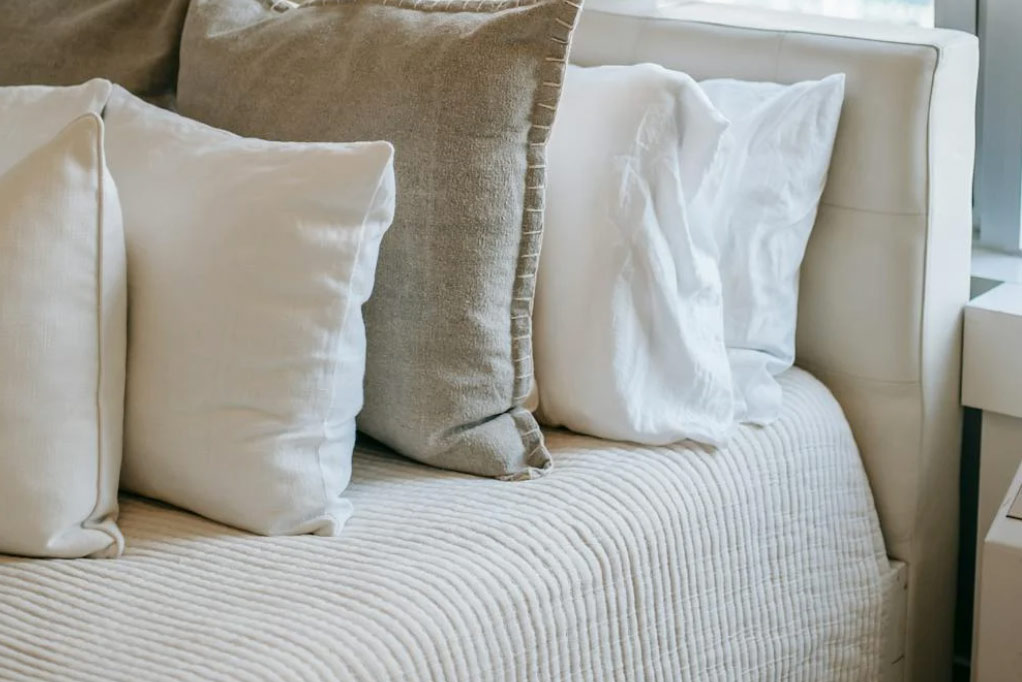
Selecting the Base Bedding
When the average person’s bedding vocabulary is sheet, blanket, and pillow, it’s easy to get lost among thread count, duvet, percale or sateen weave, to name a few. Let’s break down the differences and how you can apply what we discussed above to choose the best.
Comforter vs Duvet, Quilt vs Coverlet?
The top-layer bed cover you choose will have a big impact on not only the aesthetic of your space but also your comfort.
Duvet vs Comforter: Warmer top layers
If you’re looking for a warm bed cover, you should likely opt for a duvet or comforter. While often used interchangeably, these two items are not the same thing. A duvet is made of two parts: a duvet cover, and a duvet insert. A comforter is one single piece of bedding. Comforters often use more decorative fabric, though they are less versatile.
Because it can be separated, duvet covers are a more versatile bed cover option. You can swap the insert out in the summer or winter for a warmer or lighter option. Additionally, it can be easier to wash as you can remove duvet covers, taking up less space in the washing machine.
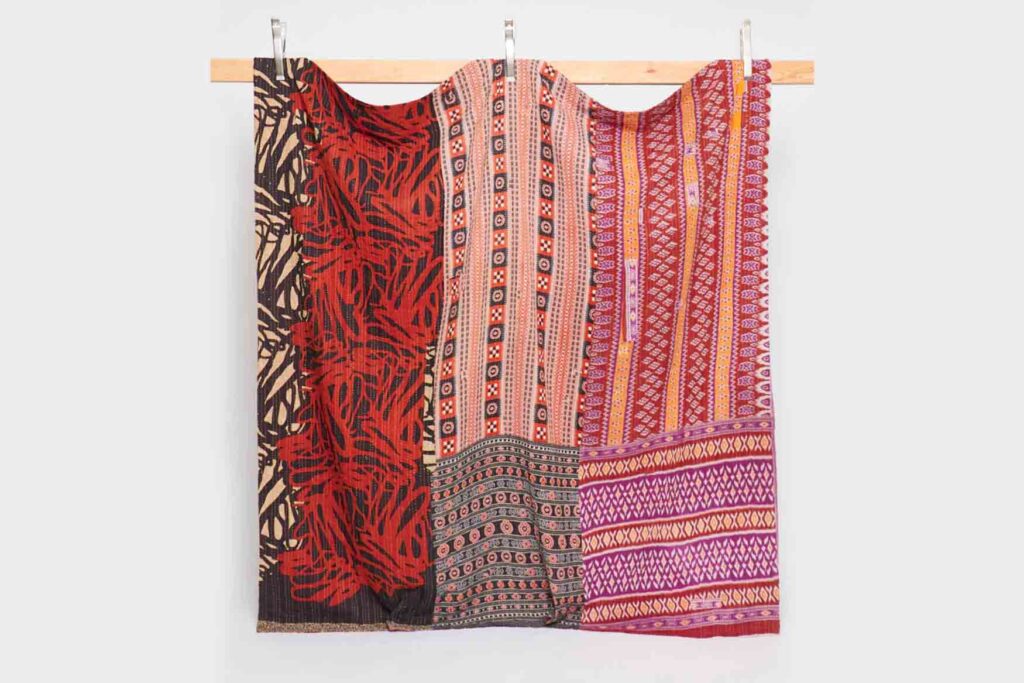
Coverlet vs Quilt: Lighter top layers
If you’re in a year-round warm climate, a coverlet or quilt might be your best option.
Coverlets are lightweight bed coverings that typically have a thin layer of batting or filling, making them ideal for layering or as a standalone bedding piece. Unlike quilts, coverlets often have a simple, tailored design without intricate stitching or patterns, offering a sleek and minimalist aesthetic.
To summarize:
- Comforter: One-piece bedding, best for year-round colder climates. Often available in more decorative designs.
- Duvet: Two pieces, with the ability to swap out the insert. best for climates with different seasons.
- Quilt: One piece, less bulky. Great for warm climates and warmer seasons, and often more decorative.
- Coverlet: One-piece, lightweight. Often simple in design.
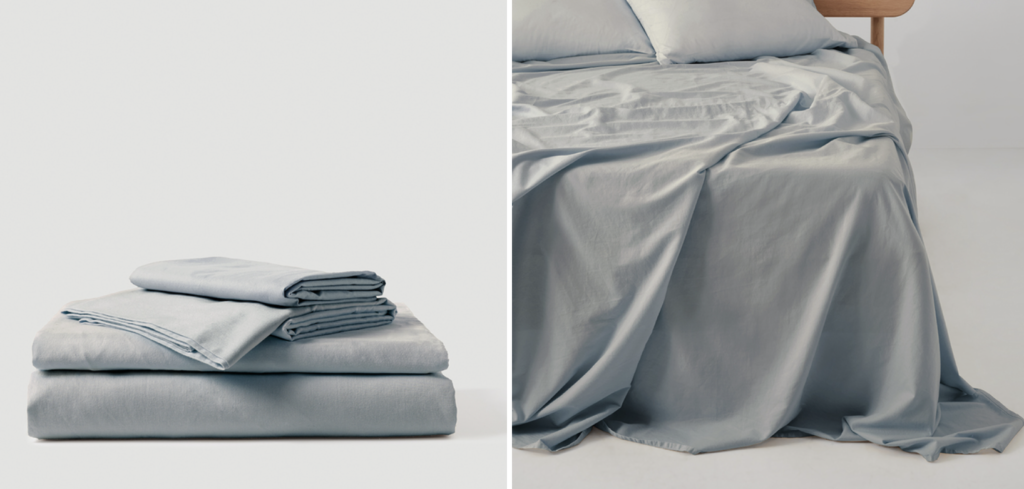
Choosing the Right Bed Sheets
Sheets are the closest bedding to your body, making the selection of high-quality fabrics especially important. Think about the climate you live in and whether you tend to run hot or cold at night before making your choice..
Linen Sheets
Linen sheets, crafted from the flax plant, offer a luxurious and breathable option, perfect for those who prefer a cooler sleeping experience. Known for their durability and natural texture, linen sheets are a popular choice for hot sleepers and warmer climates.
Cotton Sheets
Cotton bed sheets are versatile and widely available, offering various feels and warmth levels depending on the weave. Common cotton weaves include percale, sateen, flannel, and twill. Look for certified organic cotton to ensure the sheets were produced without harmful chemicals.
- Percale Sheets: Percale weave provides a crisp and cool feel, ideal for those who enjoy a lightweight and breathable sheet.
- Sateen Sheets: Sateen weave offers a smooth and luxurious feel with a slight sheen, providing warmth and comfort.
- Flannel Sheets: Flannel cotton sheets are brushed for added softness and warmth, making them perfect for colder climates and winter months. Flannel was traditionally made from wool, and today can be found in wool, cotton, or a blend.
- Twill Sheets: Twill weave creates a durable and textured fabric, offering a balance of softness and warmth.
- Mulberry Silk Sheets: Silk sheets exude elegance and luxury, offering a smooth and temperature-regulating sleeping surface. Perfect for those seeking a luxurious and indulgent bedding experience.
- Tencel Sheets: Tencel sheets, made from sustainably sourced wood pulp, offer a silky and eco-friendly option. Known for their moisture-wicking properties, Tencel sheets are ideal for hot sleepers and humid climates.
| Type | Material | Price | Best for |
| Percale Sheet | Cotton | $$ | Lightweight and breathable |
| Sateen Sheet | Cotton | $$$ | Smooth and luxurious feel with slight sheen |
| Flannel | Cotton or wool | $$ | Added softness and warmth, ideal for colder climates |
| Twill | Twill Sheets | $$ | Durable and textured fabric, balanced softness and warmth |
| Mulberry Silk | Silk | $$$ | Elegance and luxury, temperature regulating surface |
| Tencel | Wood pulp (Tencel lyocell) | $$$ | Silky and eco-friendly, moisture-wicking properties |
Understanding Bed Sheet Thread Count
Thread count refers to the number of threads woven into one square inch of fabric, typically measured by counting both the horizontal (weft) and vertical (warp) threads. A higher thread count is often associated with softer and more luxurious sheets, but it’s essential to consider other factors as well.
While a higher thread count can indicate a denser and smoother fabric, it’s not always synonymous with better quality. In fact, some manufacturers may inflate thread counts by using thinner and lower-quality threads, resulting in bed sheets that feel stiff or coarse.
What’s the best thread count for sheets?
The ideal thread count for bed sheets depends on personal preference and the type of fabric used. In general, most people find that sheets with a thread count between 200 and 800 offer a good balance of softness, durability, and breathability.
- 200-400 Thread Count: Sheets in this range are often more affordable and have a crisp and lightweight feel. They are suitable for warmer climates and those who prefer a cooler sleeping surface.
- 400-600 Thread Count: Sheets in this range offer a softer and smoother texture while still maintaining breathability. They provide a luxurious feel without sacrificing durability.
- 600-800 Thread Count: Sheets in this range are considered high-end and offer an exceptionally soft and silky feel. They’re ideal for those looking for a more luxury feel.

Sham vs Pillowcase: What’s the difference?
When purchasing bedding sets, they might come with pillowcases and/ or shams.
A pillowcase is the simple coating for your pillow that you sleep on at night. A sham, on the other hand, is a decorative covering for the top pillow, used for aesthetic purposes.
Shams often feature decorative details like flanges, ruffles, or embroidery and may have a closure on the back or along one edge. They can be made from a wide range of fabrics, including silk, velvet, or decorative cotton blends.
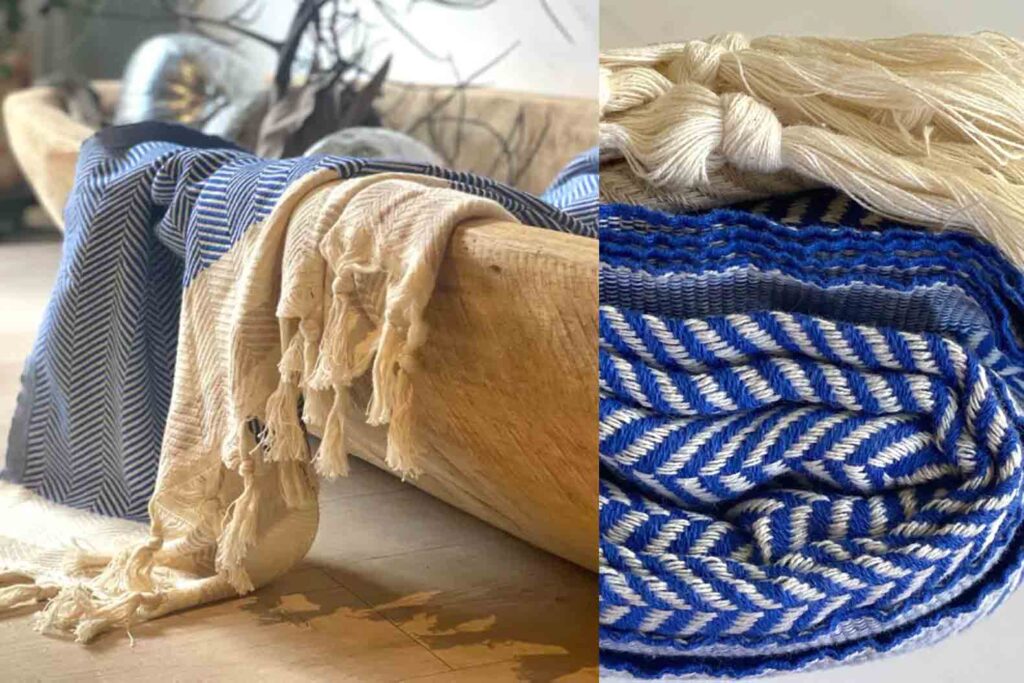
Adding a Throw Blanket
A throw blanket is a great way to add more interest to your bedding set. Many throw blankets are crafted from synthetic materials like polyester or acrylic. While these options are often more affordable, they come with drawbacks. Firstly, these fabrics are derived from crude oil, contributing to environmental issues.
In addition, when washed, they shed microplastics, polluting water sources and harming aquatic life. Synthetic throw blankets tend to pill and wear out more quickly, compromising their longevity and durability.
For sustainable and high-quality alternatives, consider throw blankets made from natural fibers such as:
- Wool: Wool is an excellent choice for a throw blanket that provides both warmth and durability. While some wool throws may feel scratchy to sensitive skin, high-quality options offer softness and coziness without compromising on sustainability.
- Cotton: Another sustainable option, cotton throw blankets are soft, breathable, and versatile. They offer comfort and warmth without the environmental impact of synthetic materials.
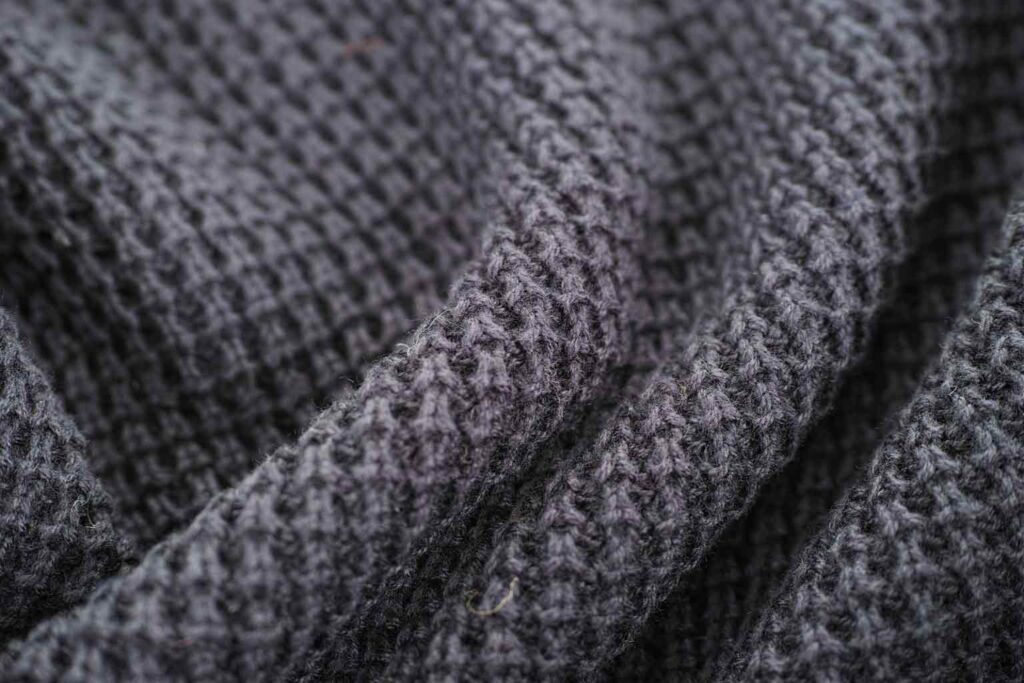
The look of your throw blanket will be largely determined by the weave and kit:
- Chunky Knit: Thick yarn and oversized stitches create a cozy and visually striking texture.
- Cable Knit: Intricate patterns of twisted stitches, reminiscent of traditional Aran sweaters, offer both style and warmth,
- Ribbed Knit: Raised vertical lines created by alternating knit and purl stitches add visual interest and texture
Aesthetic Bedding Inspiration & Products
Now for the fun part!
With an understanding of what to look for and how to choose a bedding set that is eco-friendly, we can put it all together. Check out five different styles with suggestions how to achieve them.
All of the products below are from brands that prioritize sustainable and ethical practices.
Another great way to find ethical bedding, especially for decorative pieces, is to check out small-scale or artisanal designers. They often prioritize more ethical practices and offer unique styles.
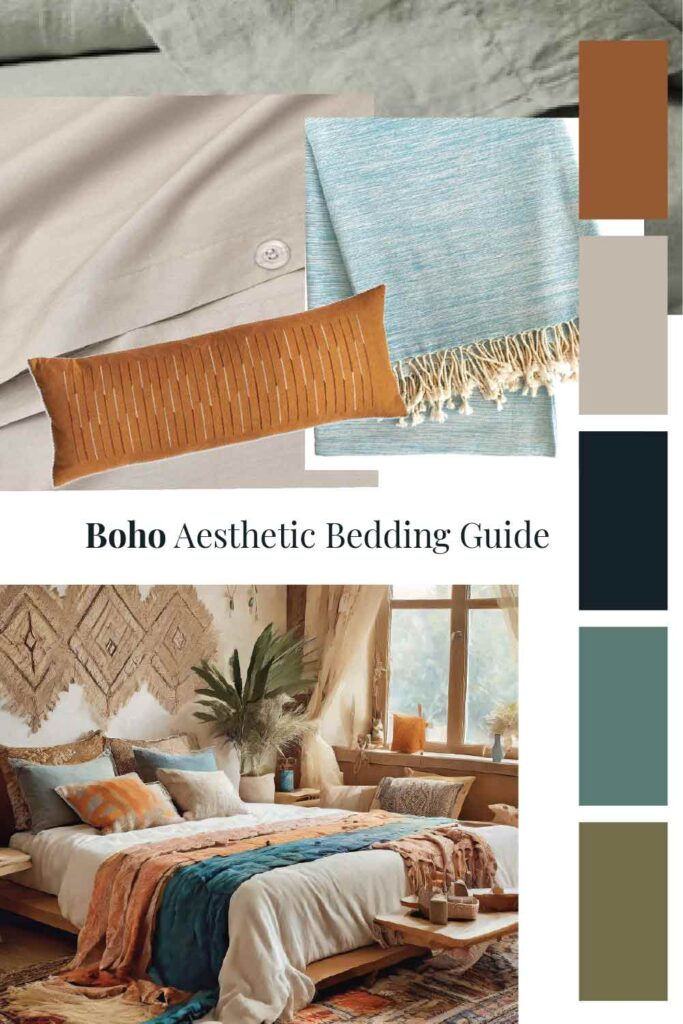
Bohemian (boho) Aesthetic Bedding:
Eclectic, relaxed, earthy
Inspired by a free-spirited and eclectic lifestyle, bohemian bedding incorporates vibrant colors, intricate patterns, and a mix of textures.
- Colors: Rich jewel tones, earthy hues, and pops of saturated colors
- Fabrics: mix different fabric weights, like cotton, silk, and velvet for throw pillows.
Try out:
- Top layer: Under The Canopy Organic Washed Cotton Duvet Set in Stone
- Sheets: Coyuchi Relaxed Linen Sheet Set in Laural (Made Trad)
- Throw blanket: Hilana Yalova Ultra Soft Marbled Blanket Throw in Turquoise
- Decorative pillows: DoneGood Long Lumbar Pillow Cover in Textura
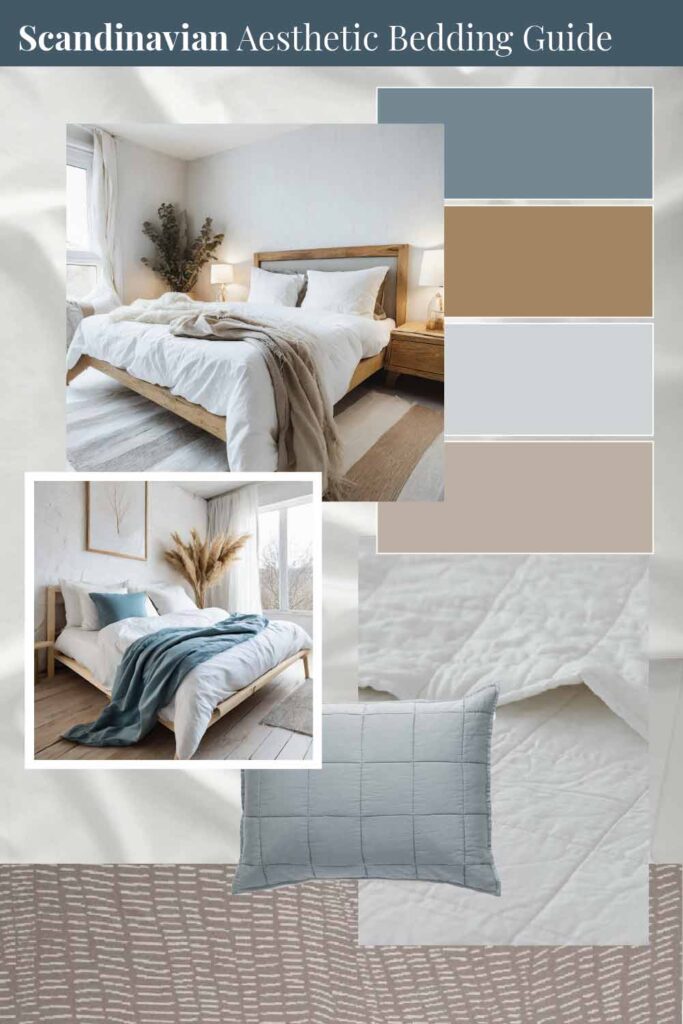
Scandinavian Aesthetic bedding
Cozy, minimalist, inviting
Rooted in simplicity, functionality, and natural elements, Scandinavian bedding features clean lines, minimalistic designs, and a focus on light and airy spaces.
- Colors: Light neutrals like white, light gray, and light tans.
- Fabrics: Stick with simple yet cozy, like cotton, hemp and wool.
Try out:
- Top layer: Pact Organic Quilt in White
- Sheets: Pact Organic Cool-Air Percale Sheet Set in White
- Throw blanket: In 2 Green Terrains Throw Blanket by Jill Malek in Hemp/Ceniza
- Shams: Pact Organic Quilted Sham in Quarry
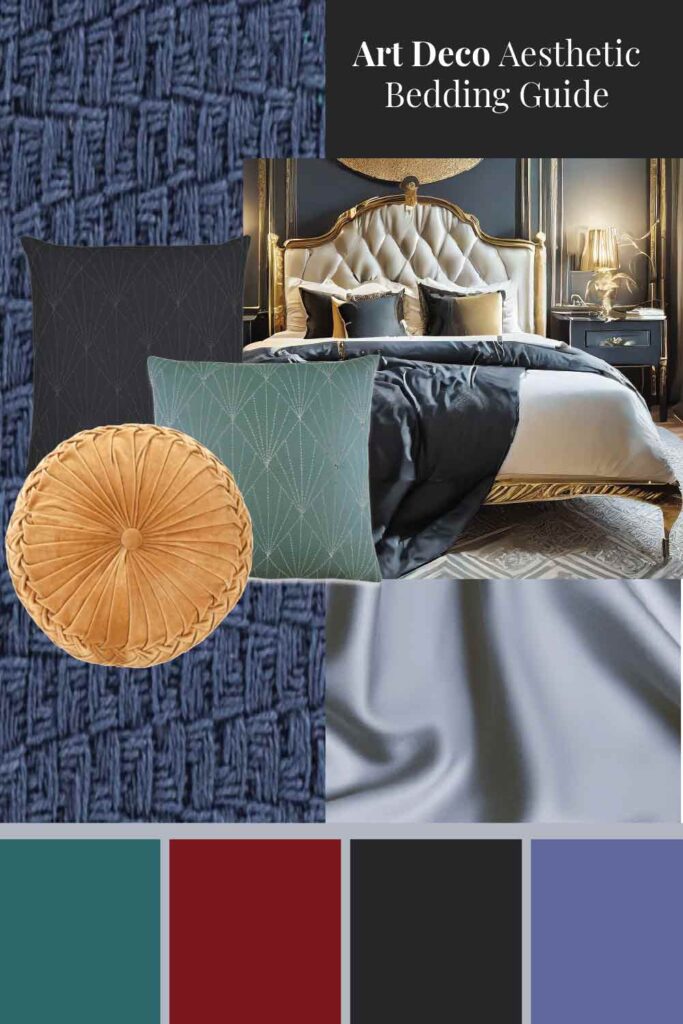
Art Deco Aesthetic Bedding
Glamorous, luxurious, bold
Characterized by geometric shapes, bold colors, and luxurious materials, Art Deco bedding exudes glamour and sophistication reminiscent of the 1920s.
- Colors: rich jewel tones, metallics, and contrasting hues.
- Fabrics: Silk, velvet
Try out:
- Top layer: Ethical Bedding Eucalyptus Silk Duvet Cover in Sky Blue
- Sheets: Pact Organic Room Service Sateen Sheet Set in Dove Gray
- Throw blanket: Resonnaire La Jolla Throw Blanket in Navy
- Decorative pillows: Made Trade Array throw pillow in charcoal and Spruce, Made Trade Velvet Round Throw Pillow in Golden Clay
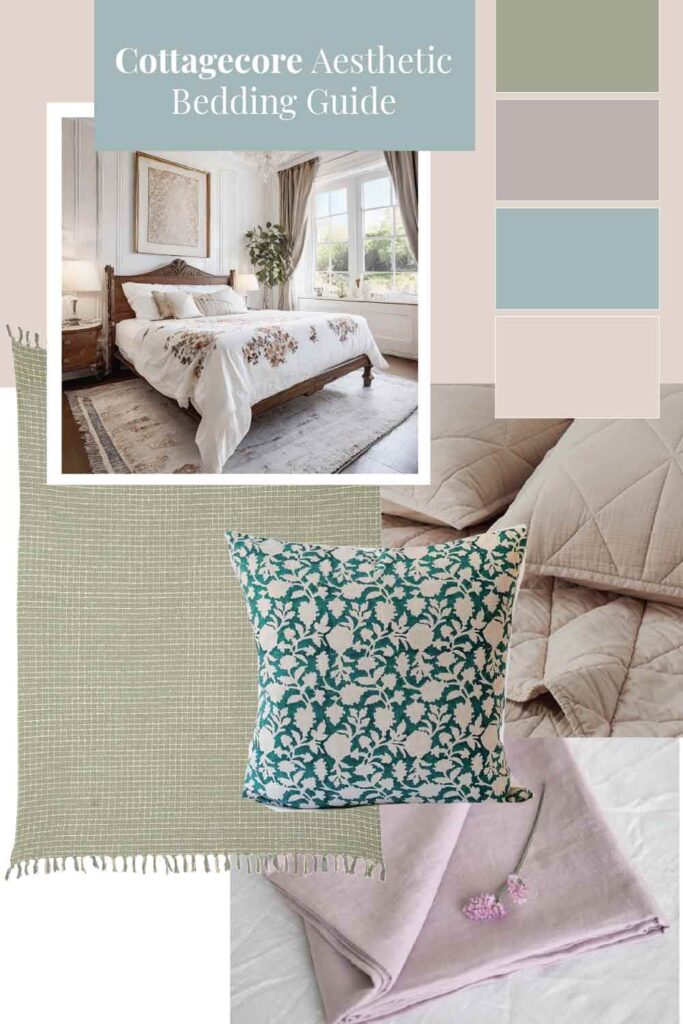
Cottage Core Aesthetic bedding
Charming, cozy, nostalgic
Inspired by the nostalgia for a simple and rural life, Cottage Core bedding features floral patterns, soft colors, and cozy textures, evoking a sense of warmth and comfort.
Colors: soft pastels, floral prints, and muted earth tones
Fabrics: Cotton, linen, wool
Try out:
- Top layer: Pact Organic Cotton Diamond Quilt in Oat or Lunar
- Sheets: Made Trade Linen Flat Sheet in Dusty Rose
- Throw blanket: MadeTrade Boucle Check Throw Blanket in Casa Amarosa
- Decorative pillows: MadeTrade Sapna Linen Throw Pillow Cover
Wrapping Up
Eco-friendliness and style go hand in hand, and are both essential parts to creating your dream bedroom. Whether you prefer minimalism, bohemian vibes, or classic elegance, prioritize natural fabrics like organic cotton, linen, and wool for both comfort and sustainability. With these choices, you’ll not only enhance your sleep experience but also contribute to a healthier planet.
By creating a bedroom that reflects your eco-friendly values as well as your style, the only place sweeter will be in your dreams!

